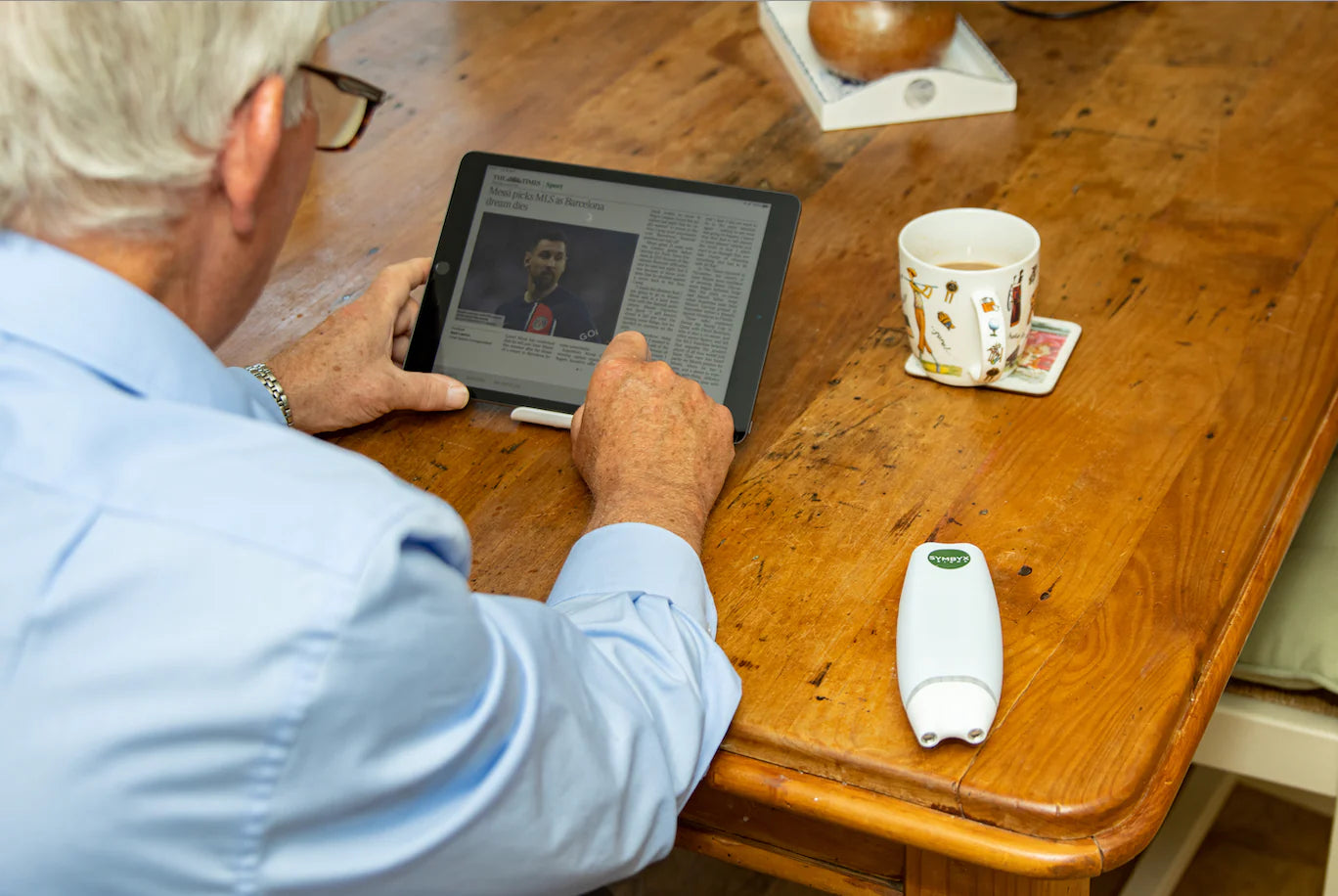SYMBYX announces two new clinical trials for Parkinson’s and a clear pathway seeking FDA approval
January 6, 2021
SYMBYX, an Australian medtech developing laser light therapies to reduce the debilitating symptoms of Parkinson’s, has begun preparations for two further clinical trials. One will be conducted in Adelaide and the second in Toronto, Canada.
Working with Olivia Nassaris, Executive Director of The Hospital Research Group Foundation – Parkinson’s (supporting people with Parkinson’s Disease in SA and NT) and Flinders University’s Dr Joyce Ramos; as well as Canadian neuroscientist and clinician Dr Anita Saltmarche, each trial will test the effectiveness of medical-grade light therapy (also known as photobiomodulation), delivered with SYMBYX devices and treatment protocols. Earlier clinical trials, conducted in Adelaide (published in BMC Neurology Journal) and Sydney (published in Photobiomodulation, Photomedicine and Laser Surgery - “PPL”), showed significant improvements for Parkinson’s disease sufferers.
Both new trials will be run over 52-weeks, will include control groups and be double-blinded, thus reducing the potential for placebo effect. Recruitment for the Canadian trial kicks off in January 2022, while the new Adelaide trial, which includes a separate exercise plus treatment group, is scheduled to begin in March 2022. “These two latest trials build on the work we have already started and will test approximately 100 patients,” said SYMBYX CEO, Dr Wayne Markman. “They are designed to gauge and analyse the impact of photobiomodulation. Our first two clinical trials showed significant improvements in patients suffering from Parkinson’s. We believe the new trials will lead to further commercial applications in additional countries,” Dr Markman said. The Canadian trial results will form the foundation of an FDA approval for SYMBYX. The therapy already has regulatory approval in the UK, EU, Australia & NZ.
Patients treated by SYMBYX co-founder and Sydney University Adjunct Senior Lecturer, Dr Ann Liebert, have returned to playing the piano, report being able to shop, carry groceries and also garden more easily. Some have even had a return of their sense of smell. “This is critical research into what historically has been an intractable, neurodegenerative condition that typically doesn’t improve,” Dr Markman said. “The best results are achieved in conjunction with a healthy diet, regular exercise, a realistic approach to treatment and care from qualified practitioners and supportive family members.”
According to the BMC Neurology manuscript, ‘measures of mobility, cognition, dynamic balance and fine motor skill were significantly improved with treatment for 12 weeks and up to one year. PPL reported that PBM was shown to be an effective treatment for a number of clinical signs of PD, with some being maintained for 45 weeks, despite lockdown restrictions.’ Improvements reported were similar between both studies.
Parkinson’s is currently incurable. It is a progressive neurological condition caused by a lack of dopamine, a chemical produced by the brain to help initiate and control body movement. Symptoms include muscle rigidity, tremor, difficulty walking as well as depression, anxiety, compromised swallowing and loss of sense of smell. It affects between 12 and 15 million people worldwide and is more prevalent than prostate, bowel and many other forms of cancer. It is the world’s fastest growing neurodegenerative disorder.
Photobiomodulation works in several ways to reduce Parkinson’s symptoms:
-
it targets cell mitochondria, where the energy units (known as ATP) driving all human life is produced - fatigue is a common symptom of Parkinson’s;
-
ion channels in nerves are modulated downwards resulting in reduced chronic pain associated with muscle spasm and rigidity;
-
systemic inflammation is reduced through the metabolism of anti-inflammatory bio-markers; and
-
additional neuro-transmitters, already in short supply in a Parkinson’s model, are manufactured in the gut – over half our Dopamine and c. 85% of serotonin is manufactured in the colon. This typically has a very positive cognitive effect (reducing ‘brain fog’ while improving sleep, speech, mood and initiative). Motor improvements include balance, gait and fine motor control such as handwriting.
SYMBYX was formed in 2019 to commercialise therapies, initially for Parkinson’s Disease. Other possible applications include further neurological disorders - Alzheimer’s, autism and depression, as well as IBS, metabolic syndrome and cardio-vascular disease.
“There is a quickly growing body of peer-reviewed research and a new clinical appreciation for and understanding of the aetiology of chronic diseases,” Dr Markman said. “The gut-brain, gut-kidney and gut-heart axis are absolutely fundamental to treating chronic disease. Our microbiota (the families of billions of bacteria, viruses and other microbes sharing our intestinal tracts) influence our general health and mental well-being.”
Early-round investors in SYMBYX include leading biomedical, medical device and venture capital investors. The company will likely commence a further round of capital raising in 2023.
Dr Markman, CEO, is available for interview.
For media inquiries, email liz@symbyxbiome.com

